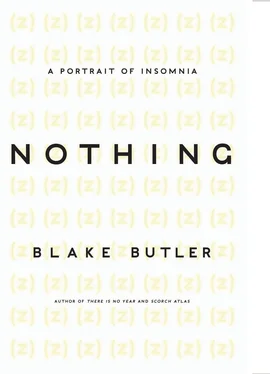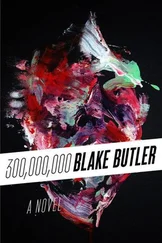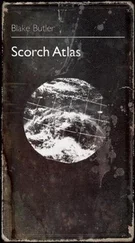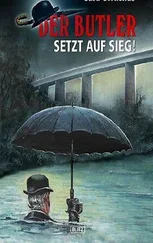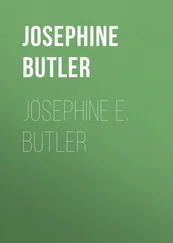Regardless, in 1790, we get the U.S. Patent Act, allowing each object in creation a number and a name, its purpose tendered, tallied, and on file for commoditization.
In the nineteenth century, we get local anesthesia. We get the revolver, kaleidoscopes, gas stoves and bikes, the tuning fork. Photography teaches us to pose in ways we want to remember, captured just that way, replicating among a light. Landscapes and houses appear doubled in our images behind us. Some see the pin-sized hole of the camera’s eye as a magic conduit of Satan, though this most of us will learn to disregard. Machines are replicating also, customizing to our more and more particular kinds of needs.
Water beds are invented to help prevent bedsores in invalids. The stethoscope allows us to listen in on what’s been going on inside us all this time: sounds we mostly haven’t located in our bodies before, except sometimes at night, when with our heads pressed into the beds we hear the reflection of our heartbeat, the breath around our heads.
In the new light, of sick people, we become aware of the spreading of unseen cells. These cells are given names. They’ve been here all this time surrounding, begetting our disease. People die now for reasons we can more aptly put a face to. We use their death to inform the growing duration of our lives. We learn surgical operation, opening flesh. We get the telephone, the typewriter, ice cream, and badminton, and these too are not enough, and we make more.
In 1795,114 Johann Blumenbach becomes the first person to actually observe the brain of someone who is asleep. He finds that in this state the brain is paler than at other times, thus suggesting, to him, that sleep is caused indeed by blood flushing to the skull. Various vascular theories, including those by Alcmaeon, von Haller, and Boerhaave, all revolve again around Hippocrates’s idea of sleep as related to the flow of blood. Luigi Rolando cuts the cerebral hemispheres from birds and finds the creatures then become perpetually sleepy. Further research is performed on subjects with fractured skulls: “When she was in deep sleep the organ remained motionless beneath the crest of the cranial bones. When she was dreaming it became somewhat elevated and when she was awake it protruded from the fissure in the skull.”115
Thirty years later, Robert MacNish says it’s more about the blood’s brain pressure than about the flow. Another dozen years and Johannes Purkinje says that in sleep the brain’s corona radiata become pressed upon by blood-cell congestion in the basal ganglia to the point neural expressions are cut off, thus suggesting sleep is more like a mode of cerebral blockage than an emptiness, mere drain. In 1865, John Jackson finds that the flesh of the eyes also go gray in sleeping, and therefore suggests sleep is not a result of the brain’s loss or gain of mass of skullheld blood at all. A guy named Hammond comes back and says sleep is more like an anemia, the decrease of hemoglobin. Theories by Fleming, Donders, Durham, Howell, and Hill continue to support the concept of sleep as the product of the blood’s evacuation, though they disagree on where this blood goes when it leaves the brain. More and more people publish papers containing their own tailored projection, flailing new thought into the light. In the meantime, we get celluloid, allowing cheaper, quicker, better replications: the replications are replicating.
In the second half of the nineteenth century, via Camillo Golgi and his successor Heinrich Waldeyer, neurons are identified and named. Rabl-Rückhardt suggests that sleep may be caused by a state in which these neurons become paralyzed and therefore temporarily cease communication. Lepine and Duval say this too. Santiago Ramón y Cajal says not only is this perhaps the cause of sleep but it could also explain hypnotics. Ernesto Lugaro takes the opposite face of the same coin, and says it’s not paralysis, but an expansion, the neurons growing to speak to one another more directly via sleep.
Exercise becomes more popularly encouraged, as do baths. “Healthy people always sleep well,” we are told. Sleep trouble, then, must come from something wrong within, a condition “self-inflicted,” rather than the simple disdain of a god. We begin to become hyperconscious both about the exercising, and about napping, which divides the sleep space, weakening the evening’s exhaustion, breaking time.
Our houses, in this manner, become more divided. Indoor toilets let us shit in smaller rooms beside the rooms in which we sleep. Production of a cheap plate glass allows homes to invoke windows, often called “wind eyes,” through which the sun and sky and night from overhead might see into the house. Later, the shape of glass will be found to flow in undetectable modes of motion, deforming over time, though at such a slow rate that a single pane’s approach to equilibrium would require 1032 years, several times longer than the estimated age of the universe. We continue to employ glass in our surroundings.
Our rate of growing grows. We get safety razors, roll film, cars. Freud notes how our paralysis in sleeping keeps us from acting out our dreams. Despite a sudden rash of manuals for parents, none of them addresses the nature of children’s sleep — instead they take concern with bedding, with sleep positions, frigid feet.116 We get blue jeans, chewing gum, and dynamite. Physicians begin to outline the average number of resting hours needed in a body, specific to a range of ages, bestowing practical, routinizing life advice. The saying “Early to bed, early to rise” brings new enthusiastic pressure to the method, like nod out now or you will fail . To remain productive, upbeat, making, there seems a clear method, though not all people seem equipped the same way to make it work.
We get linoleum, stock tickers, and the player piano. We get heroin, loudspeakers, typewriters, roller coasters, the alarm clock. We get DDT, barbed wire, machine guns, gasoline engines, contact lenses, escalators, zippers, the box spring. Catatonia is discovered. We get tuned wireless communication.
In an echo of Aristotle’s food fumes, Wilhelm Sommer in 1868 theorizes sleep comes from brain asphyxiation. The brain is shown to suck in more air while we are resting, breathing in the room, of a shared air. Other theorists like Thierry Preyer begin to attribute sleep to the body’s accumulations of kinds of harmful cells throughout the days: lactic acid, cholesterol, carbon dioxide, toxic waste. There are all these chemicals inside us, stuck, resounding, with more being pumped and funneled through the air. Leo Errera explains sleep as another strain of these undesirable substances, referred to as “leucomaines,” getting passed up to the brain to be broken down, fed through the body unto depletion, at which point, again cleared, we wake up. Abel Bouchard specifies that these toxins are made into urine in the sleep state, and that the agents in the new urine cause us to wake.
In 1869, the sedative properties of a compound called chloral hydrate are published. Its ease of manufacture and ability to lay a person out make it quickly popular and widely prescribed. Over the next 150 years this chemical will come to be used in date-rape drugs and in a mounting medium used to observe organisms under microscope. It will eventually be found in the blood of the bodies at Jonestown and in John Tyndall, Marilyn Monroe, and Anna Nicole Smith. The bodies, laid beneath the soil, might be seen by some to mix.
In 1880, Thomas Edison — himself a chronic problem-sleeper — patents the light bulb, taking credit for a long string of inherited versions and ideas. This new ability to control the kinds of hours of light indoors and out grants new democracy to our actions, and thus a glaze of uniformity to the phases of the day. Under contained glow, by machines, we can now work longer, late into evenings, in early mornings even, in the smallest, most unwindowed rooms. Bulbs on streets and in rising buildings will obscure the dark all through the hours, blurting the smaller stars out. Rooms inside of rooms will shine encombed. This development will be pointed to, by some, as years rise, as the number one cause of troubled sleep: all hours are the same.
Читать дальше
